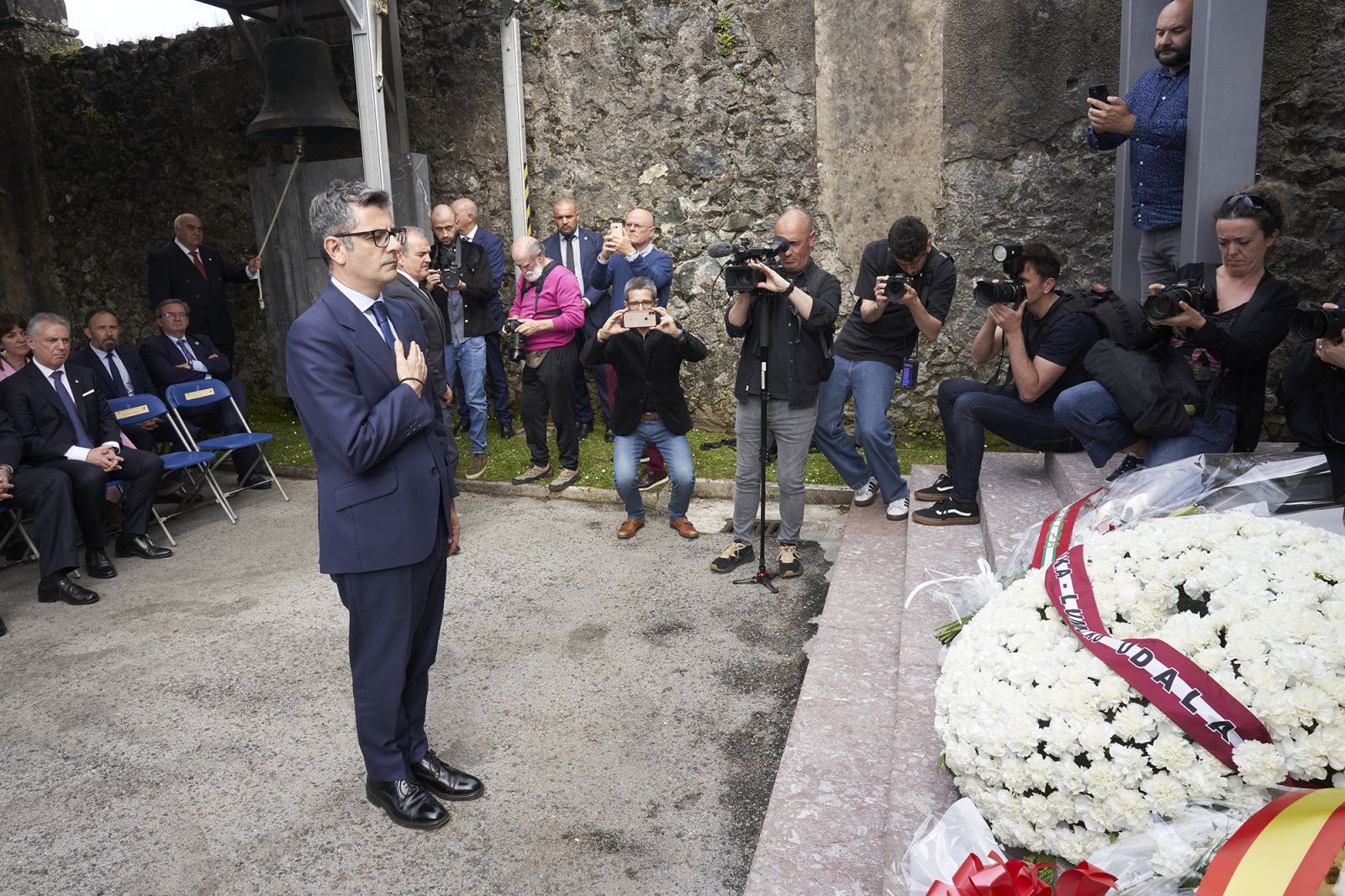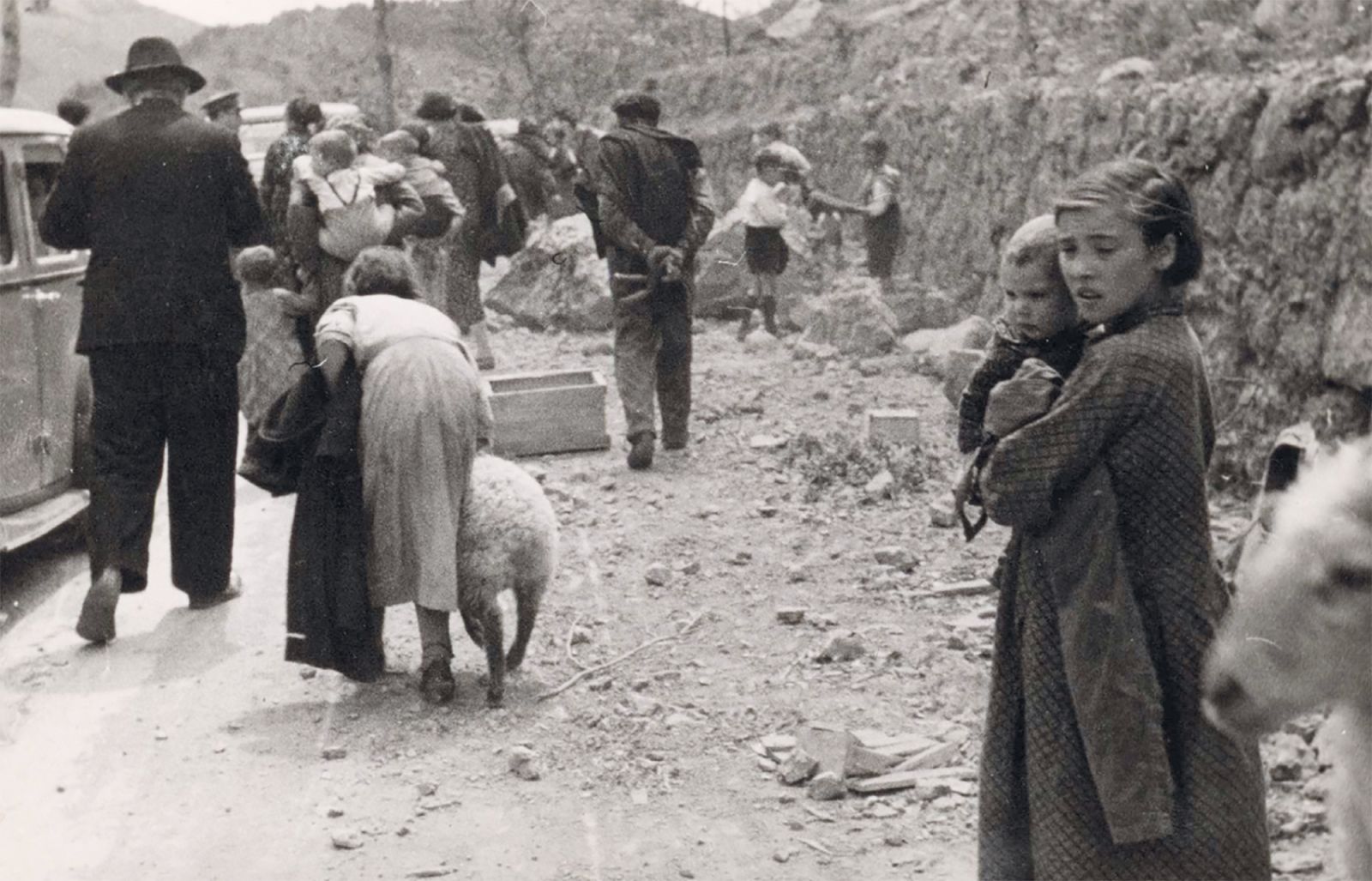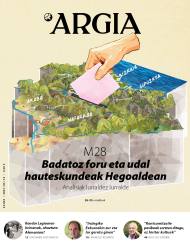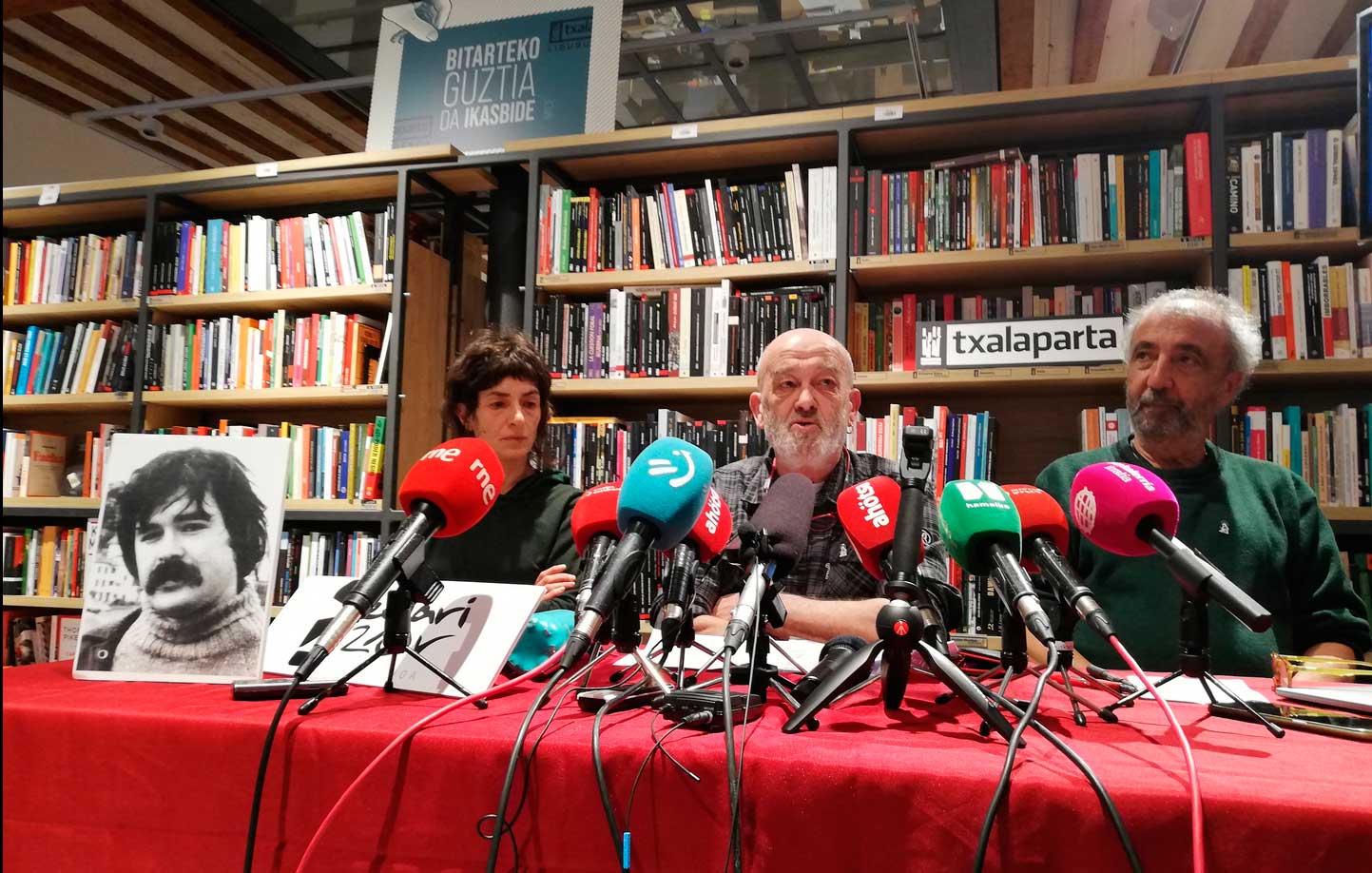Forgetting yesterday’s crimes, how can we avoid today’s wars?
- Beyond the bombing of Gernika, Germany is barely aware of the participation of the Condor Legion in the massacre of the population during the 1936 War. Journalist Carmela Negrete has told this lack of memory in Context magazine. Without settling such debts, how will we avoid the warring trend of today’s Europe?

26 April 1937. The aircraft of the German Condor Legion and the Italian Legionary Aviacione called Gernika and destroyed 85% of the town’s buildings. Historians investigating the subject believe that the dead exceeded 2,000. This disaster was stuck in the eyes of Pablo Picasso and his painting made Gernika a symbol around the world.
Another year, in Gernika, they recalled the massacre and the destruction of the bombing. As usual, Astra's mermaid screams at 15:45, as she did when fascist planes began to approach over eight decades ago. And citizens have completed their journey at dusk.
But this is the first time that a high representative of the Spanish State has attended the floral offering: “It is an honour to be here on behalf of the legitimate Government of the Republic that attacked with the bombing,” expelled the Minister of Presidency of the Government of Spain, Félix Bolaños, to the height of one hand. For many it has been like putting a knife in the heart. And the atmosphere has not calmed down the Spanish authorities designating the House of Joints of Bizkaia as a “place of memory”.
Once again the struggle of the story. Who is the heir to the current Spanish Government? The democratic republic? Or did it leave everything to the Franco regime? To answer this question, we only have to look at how things were done in the transition. As Guernica Gernika has written in the plaza of agents of URL 0, “it is known that one of the bases of this political transition was to “ignore the symbolic and institutional continuity of Franco”.

However, the lack of memory and recognition of what happened in 1937 is not only an account of the Government of Spain. The Gernika massacre was carried out live and in cold blood by the German aircraft Luftwaffe, but among the Gernika Germans it is hardly the title of a painting.
This is what the Berlin correspondent of Carmela Negrete Ctxt says in his comprehensive report entitled The ‘Guernica’ or the tip of icerberg (“Guernica hala izeberga punta”). The Condor Legion analyzes his German vision of participation in the 1936 War and states that Picasso’s Guernica “has become the only image of Hitler’s German participation in the State of Franco.” In his view, although Germany has often been regarded as a model for working with historical memory, in this case it is far from that assertion.
In West Germany, the percentage of Nazis who remained in post war high positions was very high. For example, in countries such as Lower Saxony there was little change: 95% of the lawyers had a Nazi past.
How do we treat history with missing files?
The media and museums of that country have ignored Nazi aviation Spanienkrieg or other massacres committed during the “Spanish War”. For example, the LeMO Online Vital Museum project does not mention any reference to what the German intervention meant, and the dictator Franco is described only as “political and military”, Negrete said. The archives of the Condor Legion have disappeared and when information has been requested on their actions, as the Government of Asturias did, they replied that there is no investigation by the German administrations.
But we know that in August 1936, immediately after the outbreak of war, Adolf Hitler sent war material and “volunteers” to protect the military uprising, and that the Condor Legion had at least 5,000 people in front of the war… 600 aircraft. He says he belongs to the famous historian Hugh Thomas.
According to Xabier Irujo, a researcher at the University of Reno, Luftwaff carried out at least 650 bombings in the Basque Country and used the territory as an experimental site. A month before Gernika, the German aircraft destroyed Durango, and then Eibar and other villages. The afternoon bombing of Gernika, a few hours earlier, was attacked at Munitibar by the Junker 52 bombers of the Condor Legion and by the Heinkel 51 fighter planes: “Downloading and turning around. And we were saying, ‘kazaku’, with machine gun and… goodbye!” They are words of munitibartarra Juana Bollar, recently published by Memorias de los Forgot Munitibar 26/04/1937. The chronicle of an air strike can be read in the book. Thus, many other “Gernika” were also the subject of the Condor Legion.

The German Parliament officially apologised to the people of Gernika in 1997. But David Alegre, professor of history at the Autonomous University of Barcelona, explains to the journalist of Ctxt: “The focus of political interest in Gernika over Picasso’s influence is not casual, it is an artifact of smoke that aims to block public debate to cover Germany’s responsibility for the abolition of the democratic republic of the Spanish State.”
Moreover, Alegre states that German society recently tends to be “indifferent” to the crimes committed on behalf of his country, paying more attention to the suffering suffered by its inhabitants during the Second World War than that caused by the Third Reich. Thus, many see the history of the Condor Legion as its protagonists have explained: “Like a sympathetic adventure.”
In Germany many see the history
of the Condor Legion as explained by its protagonists:
“Like a friendly adventure”
Perhaps it is understood that an entire avenue in Berlin, the Spanische Alle (Avenida Española) maintains that name. In June 1939, thousands of soldiers of the Condor Legion marched in front of Adolf Hitler at the Brandenburg Gate, and to honor them, they put that name on the avenue. “A small neighboring plaza bears the name of Gernika,” explains Negrete.
Nazis continued in high office
Anyone who believes that an intense “unswimming” process began in 1945 after the German chapter can read Die Benjamins. Eine deustche Family (Los Bejámides. The book Una familia Alemana has been published in Spanish by Trotta since 2020. Written by journalist and diplomat Uwe-Karsten Heye, he reproduces through the philosopher Walter Benjamin and his family, his sister-in-law Minister of Justice mainly through Hilde Benjamin, two post-war Germans, Western and Eastern.
In West Germany, in the Federal Republic of Germany, the percentage of Nazis who remained in senior positions in the state and society was very high. For example, judges listed as “followers” of nationalism retained their positions; in states such as Lower Saxony almost nothing changed and 95% of jurists passed Nazi: “Jurisprudence was not based on a system of values, but on a system of power,” says Hey. According to a survey conducted in 1951, almost half of Western Germans believed that the Nazi regime had “good things”.
The situation was very different from the East in the German Democratic Republic, where files and lists of Nazi criminals were published when politically they thought it appropriate. Hilde Benjamin led this process. But for the old Western Nazis this persecution of the “bloody minister” became a perfect excuse to forget their past. Hey says that whoever occupies the pages of Der Spiegel or Die Zeit in the 1950s will have to face true Nazi propaganda when he reads articles about the Soviet or East Germany: “The loss of the historical memory that the Cold War authorized the German Federal Republic,” the journalist concludes. “Thus, West Germany’s unwillingness to face its past critically and Nazi crimes ended up becoming an instrument of war propaganda between the East and the West.”
.jpg)
The worst thing is that this lack of memory was maintained even when the two Germans unified, according to Heye: “In the years after the wall, extreme right-wing ideas and harsh everyday racism emerged again from the deepest strata of collective repression.”
And now, the decision to send the Leopard tanks to Ukraine has created a huge divide in German society, even between the left, as Carmela Negrete tells us in Ctxt. Meanwhile, Brussels is proposing an additional EUR 500 million for the production of artillery weapons to launch one million shells a year, with the intention of sending them also to Ukraine. The latest report of the Stockholm International Peace Research Institute concludes that the military budget of the countries of Western and Central Europe has returned to the level of the Cold War.
Therefore, in order to contextualize the current warring trend of Germany and Europe, it cannot be said that this debt to historical memory is not an important element...
Jose Miguel Etxeberria Naparra-ren gorpua aurkitu gabe bukatu da Frantziako Landetan egindako bigarren indusketa. 44 urte dira militantea desagertu zenetik eta bere familiaren belaunaldi batetik bestera pasa da bere bilaketaren zama.
Iruñeko Txantrea auzoko kale-izendegian frankismoan errepresaliatuak izan ziren hamar emakume gogoratuko dituzte. Ekitaldia egin zuten atzo eta auzoaren hegoaldean dagoen plaza bat oroimen gune ere izendatu zuten. "Garrantzitsua da historian gertatutakoa gogoratzea;... [+]















